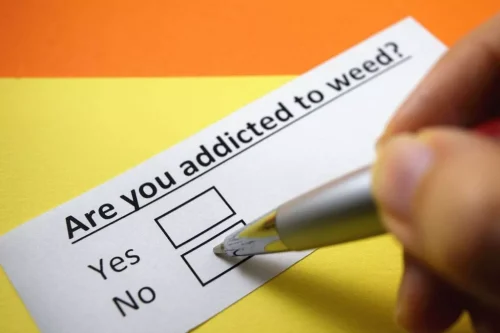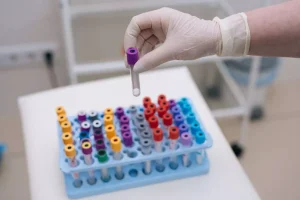Search
Alcohol Withdrawal Delirium: Causes, Symptoms, and Treatment
March 11, 2021

It’s difficult to predict who will and who won’t experience alcohol withdrawal — and how severe it will be. Some people experience prolonged withdrawal symptoms, like insomnia and mood changes, that can last for weeks or months. However, try are alcohol withdrawal seizures dangerous not to have too many firm expectations, as symptoms can continue for multiple weeks in some people. There is no exact timeline for alcohol withdrawal, and individual factors, such as the level of dependence on alcohol, will influence it.
- At Discover Recovery, we work with a wide variety of health insurance providers so those in need can get access to the treatment they need.
- Your healthcare provider will recommend and encourage treatment for alcohol use disorder.
- AW seizures generally can be prevented by medications that are cross-tolerant with alcohol.
- All heavy drinkers admitted to hospital should be monitored for the emergence of symptoms and signs indicating withdrawal, many hospitals using a structured withdrawal scale to monitor newly admitted patients.
Stage 1: 6 to 12 hours after last drink
Delirium tremens (DTs), also called alcohol withdrawal delirium (AWD), is the most severe form of alcohol withdrawal. It occurs in 5-10% of alcohol-dependent people and is a medical emergency. Signs and symptoms of DTs include disorientation, confusion, agitation, hallucinations, fever, sweating, high blood pressure, and fast heart rate. These symptoms can quickly progress to cardiovascular collapse and death without timely treatment.
1. Clinical workflow of diagnosis and therapy of AWS
These manifestations result from alcohol-induced imbalances in the brain chemistry that cause excessive neuronal activity if the alcohol is withheld. Management of AW includes thorough assessment of the severity of the patient’s symptoms and of any complicating conditions as well as treatment of the withdrawal symptoms with pharmacological and nonpharmacological approaches. Recognition and treatment of withdrawal can represent a first step in the patient’s recovery process. The severity of alcohol withdrawal symptoms progressively increases over years of alcohol abuse, and repeated detoxifications augment the likelihood of alcohol withdrawal seizures (83,84).

Chronic Alcohol Abuse and Epilepsy Risk
Small amounts of alcohol do not change the blood levels of anti-seizure drugs. They also do not cause changes in electroencephalographic (EEG) readings (brain activity tracings). The decision not to include vital signs was based on data showing that pulse and blood pressure did not correlate with the severity of alcohol withdrawal than the other signs and symptoms https://ecosoberhouse.com/ included in the CIWA-Ar. If you already have alcohol use disorder, it’s important to seek counseling and medical care as soon as possible. The goal is to safely and gradually decrease your dependence on alcohol so that you can resume your daily life. Alcohol withdrawal is common, but delirium tremens only occurs in 5% of people who have alcohol withdrawal.
Alcohol withdrawal syndrome is a clinical diagnosis that relies heavily on the history and physical, which is also used to gauge disease severity. To maintain homeostasis in the CNS, inhibitory signals from the GABAergic system are balanced by excitatory neurotransmitters such as glutamate. Alcohol, a CNS depressant, stimulates the GABAergic system and, in acute intoxication, causes a range of clinical manifestations such as disinhibition, euphoria, and sedation. At the same time, endogenous GABA is downregulated.[3] Thus, when alcohol is withdrawn, a relative deficit of GABA may occur and simultaneous excess in glutamate, resulting in the excitatory symptoms seen in alcohol withdrawal syndrome. Healthcare providers typically prescribe short-term medications to relieve the symptoms of mild to moderate alcohol withdrawal.

Symptoms and Causes
But treatment varies based on the severity of alcohol withdrawal and the likelihood that it could progress to severe or complicated withdrawal. It affects about 50% of people with alcohol use disorder who stop or significantly decrease their alcohol intake. AUD is the most common substance use disorder in the U.S., affecting 28.8 million adults. When someone drinks alcohol for a prolonged period of time and then stops, the body reacts to its absence. This is alcohol withdrawal, and it causes uncomfortable physical and emotional symptoms.
Treatment Settings

What are alcohol withdrawal symptoms?
- Depressants like alcohol can cause your muscles to relax, but withdrawal can cause tremors, muscle tightness, and seizures.
- Indeed, in accordance with the central role of the IC in triggering alcohol withdrawal seizures, multiple alcohol withdrawal episodes in rats facilitate the development of IC kindling (87,88).
- Inpatient and outpatient treatments are available, and these depend on factors including current withdrawal severity and the severity of past withdrawals.
- We offer a combination of proven therapies and services to meet your individual needs.
Important Links:
Tags:
Courses
-
MBA for Executives
-
testssd
-
testssd
-
testssd
-
testssd
-
testssd
-
BBA from UK University
-
Banking course + Job
-
MBA from ARU, Anglia Ruskin University (UK)
-
4-IN-1 Professional Diploma in Banking, Financial Services & Insurance (PDBFSI)
-
MBA from HSNC University (Mumbai, India)
-
Sage Foundation - Professional Diploma in Banking
-
3-in-1-management-program
-
Post Graduate Diploma in Banking & Finance
-
Post Graduate Diploma in Digital Marketing
-
Post Graduate Diploma in Integrated Marketing, Advertising & Communication
-
4-IN-1 Professional Diploma in Banking, Financial Services & Insurance (PDBFSI)
-
Professional Diploma in Digital Marketing
-
Professional Diploma in Real Estate Management
-
Professional Diploma in Photography
-
Certificate in Business English
